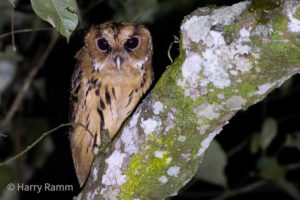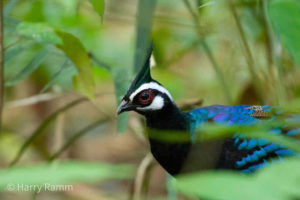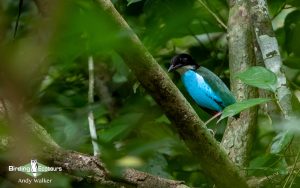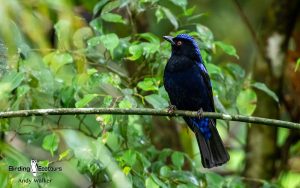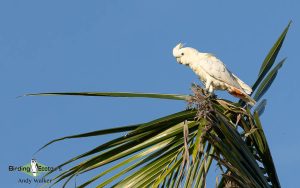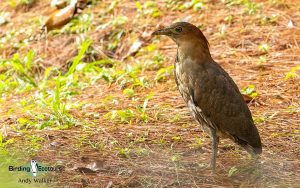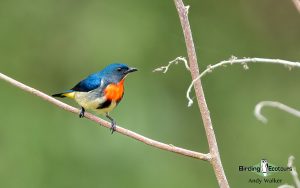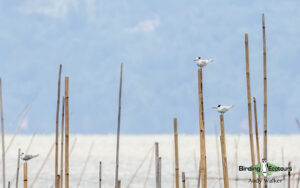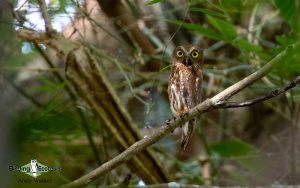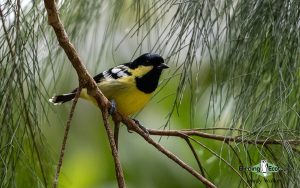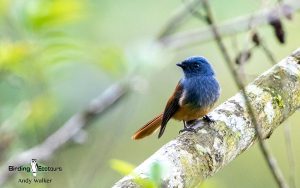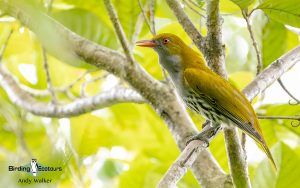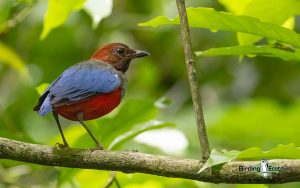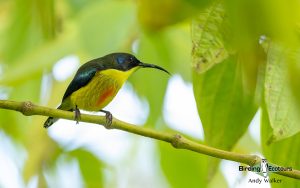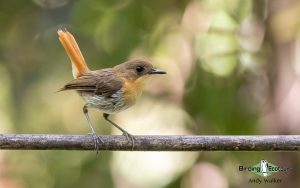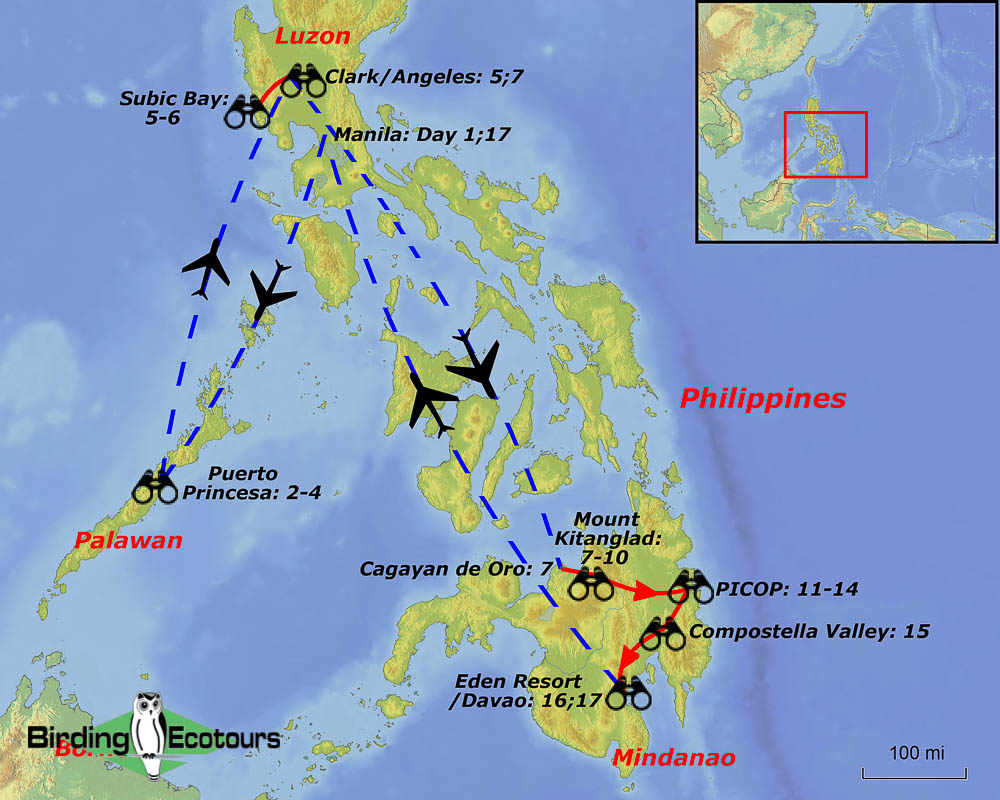Philippines: Spectacular Endemic Birding
Go to: Philippines Birding Tours | Birding Tours in Asia | All our birding tours
Philippines: Spectacular Endemic Birding
January 2026/2027
The Philippines is one of the most biodiverse places in the world and has a high degree of endemism, which combines to make it one of the most exciting birding destinations in Southeast Asia. The country consists of over 7,600 islands, covering an area of over 930 miles (1,500 kilometers) in the western Pacific Ocean. Of the 762 species recorded across the archipelago (following International Ornithological Congress (IOC) taxonomy, v13.2 in December 2023), an impressive 230 species are endemic. These endemics include the national bird of the country, the huge, “Monkey-eating Eagle”, also known as the Philippine Eagle, and probably the most-wanted bird for most visiting birdwatchers. The eagle is a huge target on this small-group tour – the habitat here means a small group is much more likely to be successful in finding the amazing endemic birds on offer. All our tours are small-group tours, but this is one destination where that fact is particularly important.
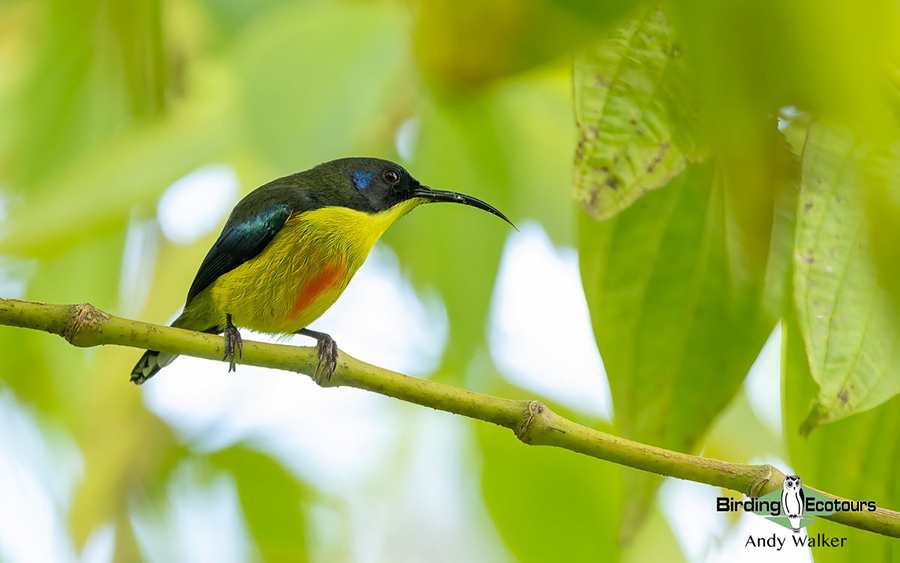
The Philippines is home to 17 endemic owls, eight endemic kingfishers (and another ten more widespread species), ten endemic hornbills, eleven endemic parrots, two endemic broadbills, one stunning endemic trogon, two endemic pittas (plus another near-endemic species), and 17 endemic pigeons (including some absolute belters!). In addition to the endemics, the Philippines, during the non-breeding season, has become a fairly reliable place to find the Critically Endangered (BirdLife International) Chinese Crested Tern and Vulnerable (and globally hard-to-connect-with) Japanese Night Heron, and we will be checking reports regularly and may look for one or both of these species on the tour, if there is a chance of connecting with them.
Deforestation is a huge issue in the Philippines, and it is a major threat to the survival of many birds, ninety-nine species are considered globally threatened by BirdLife International. Time is fast running out for many of these unique and wonderful birds and so a visit to the country is recommended sooner rather than later.
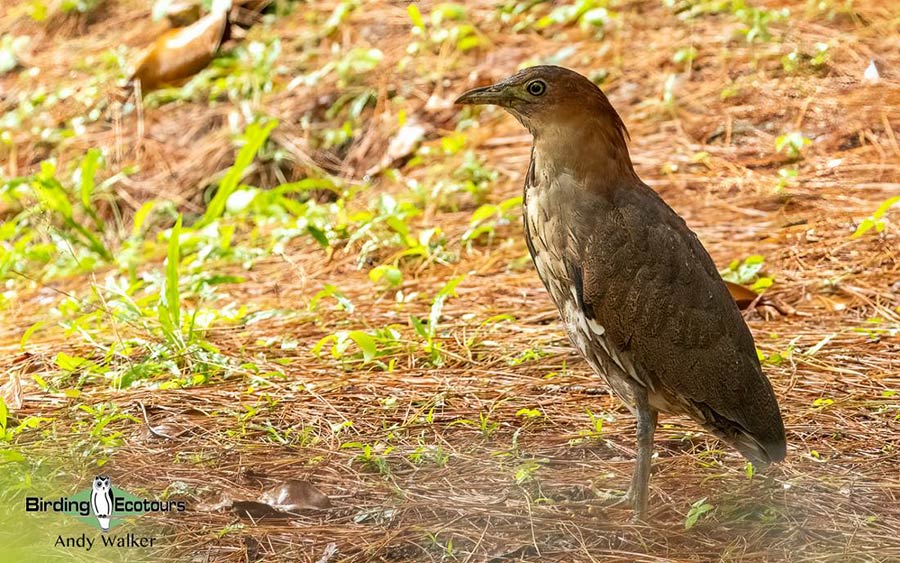
With the above in mind, our small-group Philippines birding tour focusses on the endemics (and overwintering specials) of the three bird-rich islands of Luzon, Palawan, and Mindanao, with a long list of potential highlights including some of the most highly sought-after birds in the world. Major tour targets will include Philippine Eagle (one of the aforementioned Critically Endangered species), (Mindanao) Wattled Broadbill, Azure-breasted Pitta, Philippine Pitta, Philippine Trogon, Southern Silvery Kingfisher, Spotted Wood Kingfisher, Hombron’s Kingfisher, Celestial Monarch, Philippine Eagle-Owl, Giant Scops Owl, Mindanao Scops Owl, Palawan Frogmouth, Philippine Frogmouth, Green Racket-tail, Yellow-breasted Fruit Dove, Mindanao (Tarictic) Hornbill, Luzon (Tarictic) Hornbill, Rufous Hornbill, Purple Needletail, Bukidnon Woodcock, Coleto, Lina’s Sunbird, and many more! We will utilize specialist local guides to make the most of our birding on each island and look forward to a great trip list and showing you the many amazing birds of the Philippines.
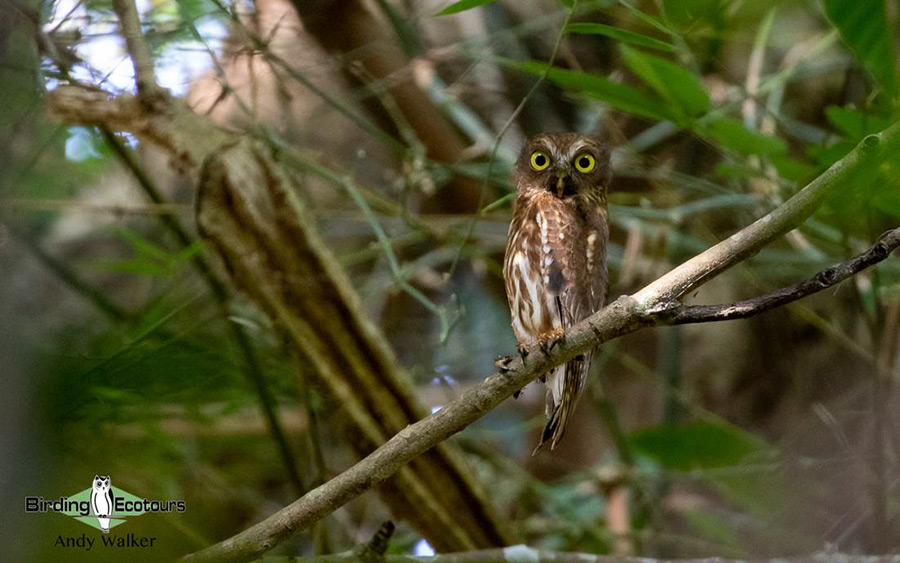
Detailed Itinerary (17 days/16 nights)
Day 1. Arrival in Manila (Luzon)
A non-birding day. You will be met at Manila International Airport on the island of Luzon, after your arrival in the Philippines, and will be transferred to our nearby hotel for the rest of the day at your leisure. We will meet for a group welcome dinner together in the evening.
Overnight: Manila, Luzon
Day 2. Manila (Luzon) to Puerto Princesa (Palawan)
The island of Palawan is the largest island in the archipelagic province of the same name in the west of the Philippines. The 1,780 islands of this province stretch from the center of the Philippines (Mindoro), in the northeast, down to the Malaysian state of Sabah, in Borneo, in the southwest. Our time will be spent birding on Palawan Island which measures 280 miles (450 kilometers) long and 31 miles (50 kilometers) wide. The island is scenically spectacular and has been voted “Most Beautiful Island in the World” multiple times, it is also incredibly biodiverse and we will get a great appreciation of this during our tour. Biogeographically, Palawan is part of Sundaland, therefore the flora and fauna is more akin to that found in Borneo, rather than the rest of the Philippines.
There are numerous great birding sites on Palawan and we will enjoy the majority of these today, as well as over the next three full days, seeking out as many birds as we can. After a morning flight from Manila to Puerto Princesa (the capital of Palawan), we will commence our birding. We will likely visit Iwahig Prison and Penal Farm and a watershed reserve near Puerto Princesa, for our first Palawan endemics, including Palawan Flycatcher, White-vented Shama, and Blue Paradise Flycatcher.
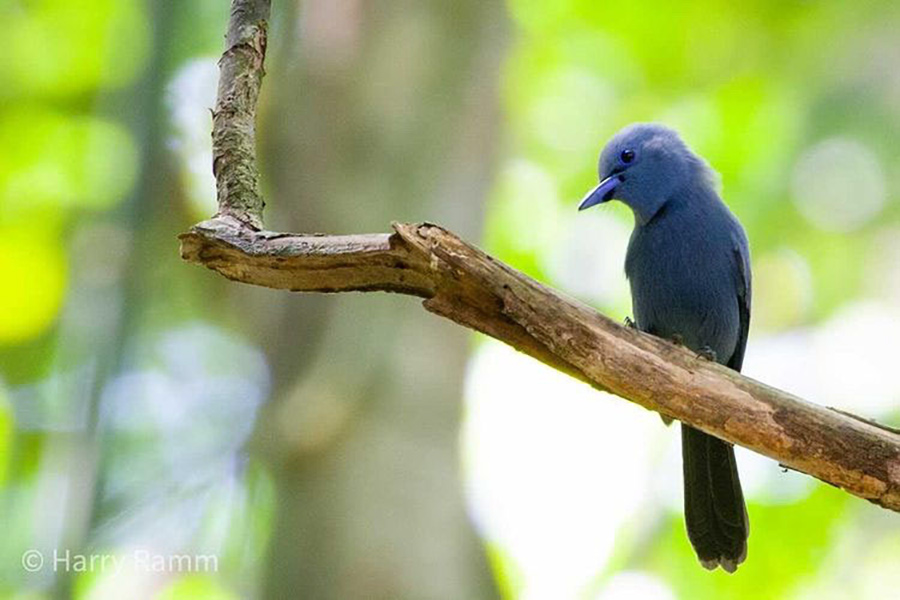
There are a host of other species here including endemic bulbuls and Blue-naped Parrot. There are some good photo opportunities too. This area has a bird list of over 200 species and as this will be our first ‘proper birding’ of the trip, we are sure to find plenty to keep us busy with. Likely birds will include a mix of widespread Asian species, Sundaic species, Philippine specials, and overwintering shorebirds. In addition to those species mentioned above, we may also find Chestnut-breasted Malkoha, Greater Coucal, Crested Serpent Eagle, Stork-billed Kingfisher, Collared Kingfisher, Pied Triller, White-breasted Woodswallow, Brown Shrike, Ashy-headed Babbler, Rufous-tailed Tailorbird, Black-headed Bulbul, Ashy-fronted Bulbul, Common Hill Myna, Palawan Flowerpecker, Lovely Sunbird, Chestnut Munia, and White-bellied Munia. A wide range of overwintering and resident shorebirds are possible too, potentially including Little Ringed Plover, Black-winged Stilt, Common Greenshank, Marsh Sandpiper, Wood Sandpiper, and Greater Painted-snipe.
Overnight: Puerto Princesa, Palawan
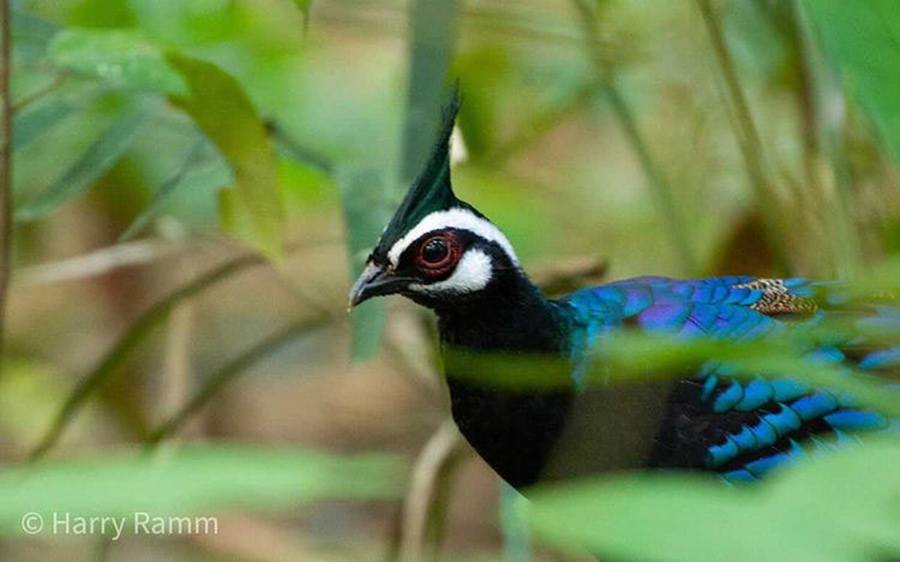
Days 3 – 4. Palawan birding
We will spend three full days birding around Puerto Princesa in search of the many rare and interesting bird species found on Palawan, with special emphasis on finding as many endemics as we can. These should include Palawan Hornbill, Melodious (Palawan) Babbler, Falcated Wren-Babbler, Red-headed Flameback, Palawan (Grey-throated) Bulbul, Sulphur-bellied Bulbul, Palawan Tit, and Palawan Blue Flycatcher. We will also hope for the ultra-rare Palawan Peacock-Pheasant, although the habituated bird that had been showing well to all visitors for a number of years, seems to have now died, making the chances of this bird much harder than before!
Our birding on Palawan over these three full days will take in a range of exciting sites, each chosen to provide good chances for a range of endemic and special birds. Some of the targets here will include Blue-headed Racket-tail, Red-vented (Philippine) Cockatoo, Black-chinned Fruit Dove, Green Imperial Pigeon, Palawan Hornbill, Philippine Pitta (propinqua subspecies), Western Hooded Pitta (resident palawanensis subspecies), Rufous-backed Dwarf Kingfisher, Spot-throated Flameback, Yellow-throated Leafbird, Palawan Crow, Palawan Blue Flycatcher, Falcated Wren-Babbler, Pin-striped Tit-Babbler (distinct woodi subspecies), Palawan Tit, and Palawan Flowerpecker.
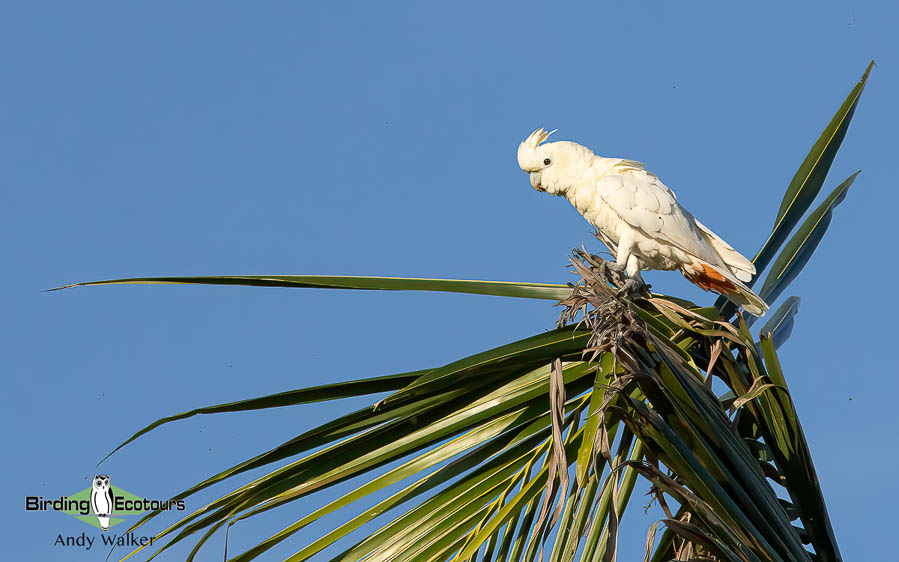
Another potential site to visit near our base is the well-known Palawan Wildlife Rescue and Conservation Center, Puerto Princesa, where we could find the endemic Pale Spiderhunter, along with a mix of other endemic and more widespread species including Palawan Hornbill, Ashy-headed Babbler, Melodious (Palawan) Babbler, Nankeen Night Heron, Black-naped Oriole, Black-naped Monarch, Palawan (Grey-throated) Bulbul, Fiery Minivet, Common Hill Myna, Lovely Sunbird, and Purple-throated Sunbird.
Beaches, such as those in Honda Bay will be checked for Beach Stone-curlew, Great-billed Heron, and Malaysian Plover and after dark, we will look for Palawan Frogmouth and Palawan Scops Owl.
Overnight (two nights): Puerto Princesa, Palawan
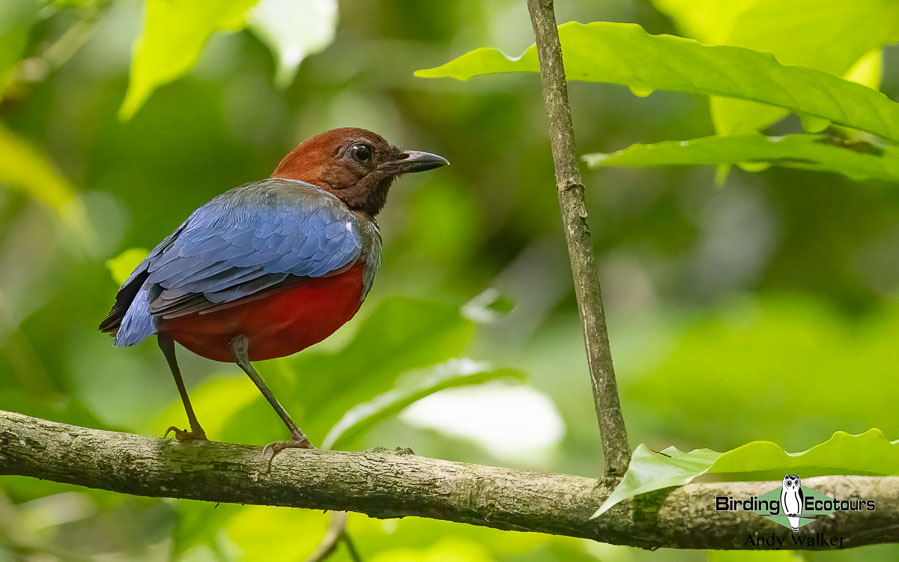
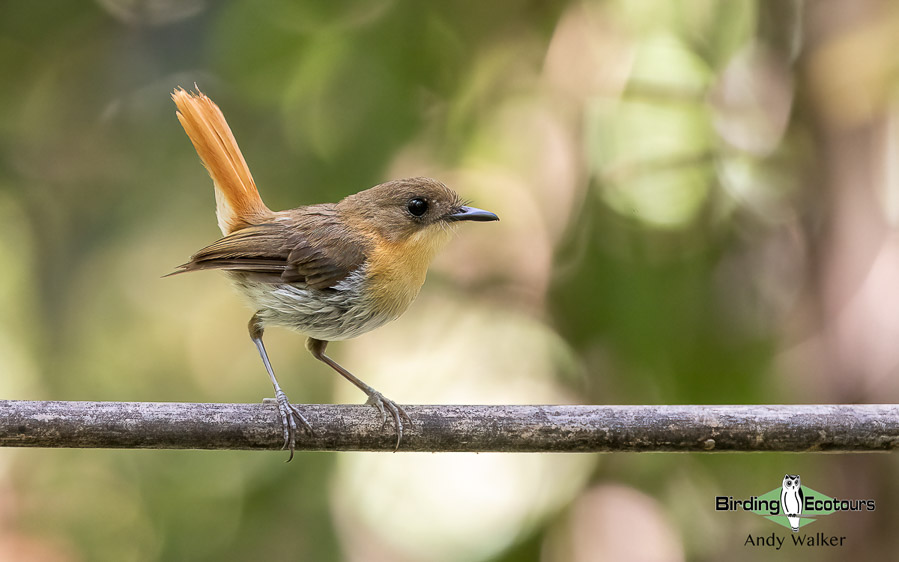
Day 5. Transfer Puerto Princesa (Palawan) to Subic Bay (Luzon)
There may be some time for birding near our accommodation on Palawan before we need to leave to get our flight from the island of Palawan to the island of Luzon. We will fly into Clark before continuing to Subic Bay, ready for an exciting full day of birding the following day.
Overnight: Subic Bay, Luzon
Day 6. Subic Bay Watershed Reserve birding
The Subic Bay area and adjacent Bataan National Park contains some of the last significant areas of lowland dipterocarp forest in western Luzon. Subic Bay was previously a US naval facility, and this resulted in the protection of large tracts of forest, which is now protected as a watershed reserve. This is a great area and there are numerous target birds for us to look for during the day. The site is the best area for a number of Luzon specials, particularly the Endangered (BirdLife International) endemic Green Racket-tail, along with an exciting cast, the likes of which might include Blue-naped Parrot, Scale-feathered Malkoha, Rough-crested Malkoha, Philippine Hawk-Eagle, Philippine Serpent Eagle, Philippine Green Pigeon, Yellow-breasted Fruit Dove, Spotted Imperial Pigeon, Whiskered Treeswift, Rufous-crowned Bee-eater, Luzon (Tarictic) Hornbill, Luzon Flameback, Sooty Woodpecker, Philippine Falconet, Blackish Cuckooshrike, Bar-bellied Cuckooshrike, Trilling Tailorbird, Rufous Coucal, (Luzon) White-browed Shama, Spotted Wood Kingfisher, Stripe-headed Rhabdornis, Pygmy Swiftlet, Balicassiao (a drongo!), Philippine Fairy-bluebird, Handsome Sunbird, and possibly rarities like White-lored Oriole and White-fronted Tit.
Overnight: Angeles (near Clark), Luzon
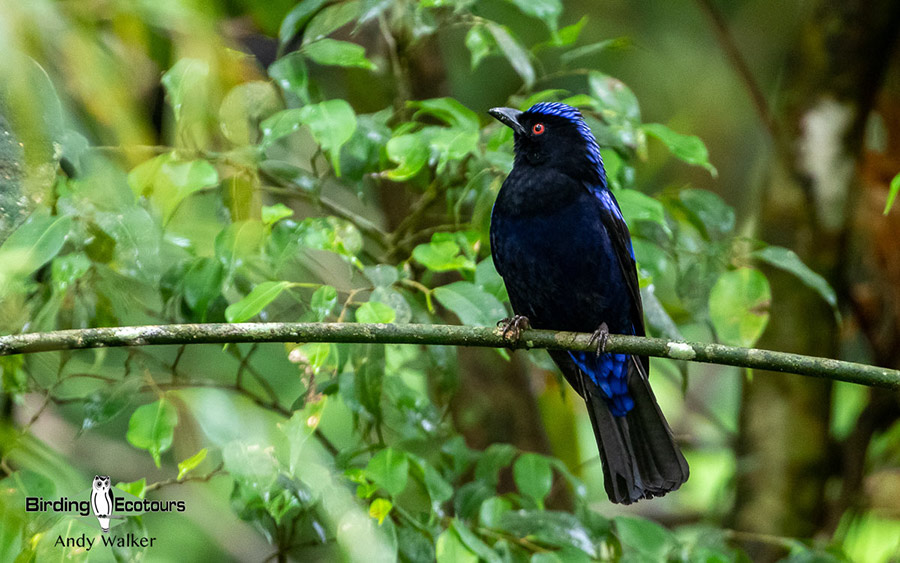
Days 7. Clark (Luzon) to Cagayan de Oro (Mindanao)
Essentially a travel day. We will fly south from Clark, in Luzon, to Cagayan de Oro, on the island of Mindanao. In the afternoon we will travel to Mount Kitanglad, our base for the next few days.
Overnight: Mount Kitanglad, Mindanao
Day 8 – 10. Mount Kitanglad birding
We will have three full days exploring the amazing Mount Kitanglad looking for montane specials, with particular emphasis on seeing the great Philippine Eagle which we will look for at a watchpoint higher up the mountain at around 5,000 feet (1,550 meters).
The remnant forest patches in the area can be good for mixed-species feeding flocks which may contain Yellow-bellied Whistler, Black-and-cinnamon Fantail, Negros Leaf Warbler, Sulphur-billed Nuthatch, Turquoise Flycatcher, and the rather odd Cinnamon Ibon – an aberrant sparrow found in Mindanao’s montane forests, previously thought to be a white-eye!
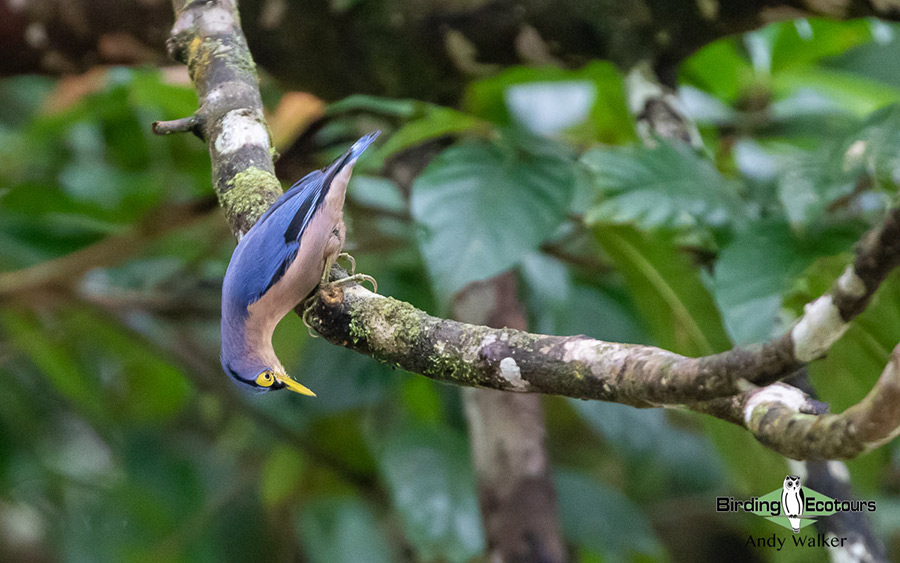
While we bird the area, we might find Yellow-breasted Fruit Dove, Amethyst Brown Dove, and White-eared Brown Dove in fruiting trees, while flowering trees may yield Flame-crowned Flowerpecker. We will have to carefully look in the undergrowth for the gorgeous, but secretive Hombron’s Kingfisher. At dusk here, we will have a chance to see Bukidnon Woodcock which was discovered as recently as 1993 and at night Philippine Frogmouth, Philippine Nightjar, Giant Scops Owl, and Mindanao Scops Owl.
As we hike through the mid-level trails, we might locate Mindanao (Tarictic) Hornbill, Brown-breasted Kingfisher, Plain Bush-hen, Philippine Swiftlet, Philippine Hanging Parrot, Philippine Hawk-Cuckoo, McGregor’s Cuckooshrike, Apo Myna, White-cheeked Bullfinch, Red-eared Parrotfinch, Rufous-headed Tailorbird, and Mindanao White-eye.
We will be constantly looking out for Philippine Eagle of course, but we will also keep our eyes peeled for other raptors, like Crested Honey Buzzard (an endemic subspecies), Philippine Honey Buzzard, Pinsker’s Hawk-Eagle, and Rufous-bellied Eagle. Further entertainment is possible in the form of Mindanao Racket-tail, Mountain Shrike, Apo Myna, Stripe-breasted Rhabdornis, Coleto, Apo Sunbird, and Bundok Flycatcher.
Overnight (three nights): Mount Kitanglad, Mindanao
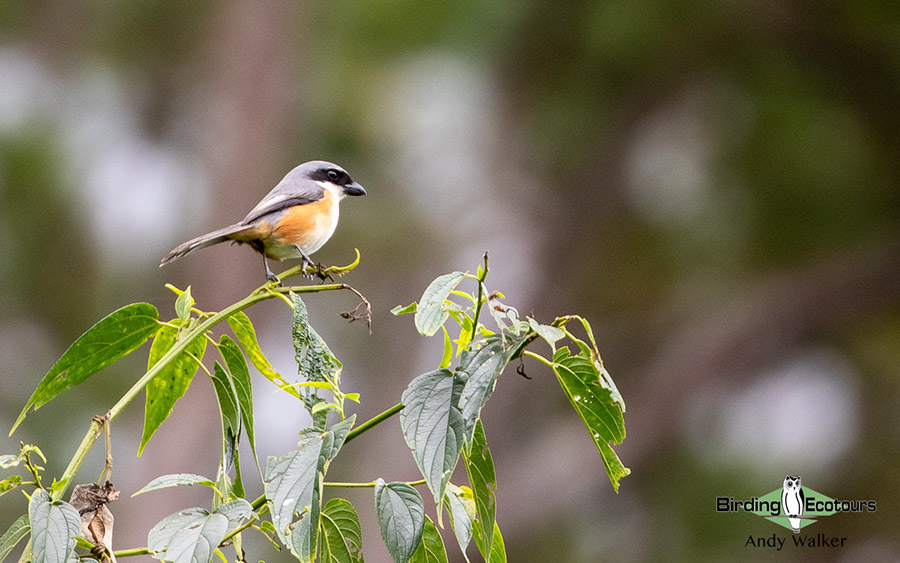
Days 11. Mount Kitanglad to Bislig
After what is sure to have been a thrilling few days birding on Mount Kitanglad, we will reluctantly head down the mountain en route to the lowlands and transfer to the town of Bislig. For the next three full days we will be birding around the area known as PICOP (Paper Industries Corporation of the Philippines) Forest – famous in the annals of world birding, but the majority of today will be spent traveling there.
Overnight: Bislig, Mindanao
Day 12 – 14. PICOP Forest birding
Over the course of three full days, we will explore the various roads and trails of PICOP Forest in search of many spectacular species. PICOP was granted a logging concession of mainly lowland forest in eastern Mindanao in 1952, however after around 30 years of logging the concession failed. PICOP Forest is probably one of the most famous birding sites in the Philippines, though, with the illegal logging operations that are underway here, the area and its birdlife, are heavily threatened and is a further example of why a birding holiday to the Philippines is something to do sooner rather than later. PICOP Forest is still the best place to see the glorious Celestial Monarch (one of the top birds in the archipelago, though it is never easy) and the amazing holy grail (Mindanao) Wattled Broadbill; these will be two major targets during our time here, though there will also be many others.
In addition to the monarch and broadbill, other top targets will include Philippine Spinetail, Azure-breasted Pitta, Philippine Pitta, Southern Silvery Kingfisher, Rufous Hornbill, Writhed Hornbill, Striated Wren-Babbler, and with Mindanao Hawk-Owl and Chocolate Boobook after dark, it is sure to be an exciting few days’ birding.
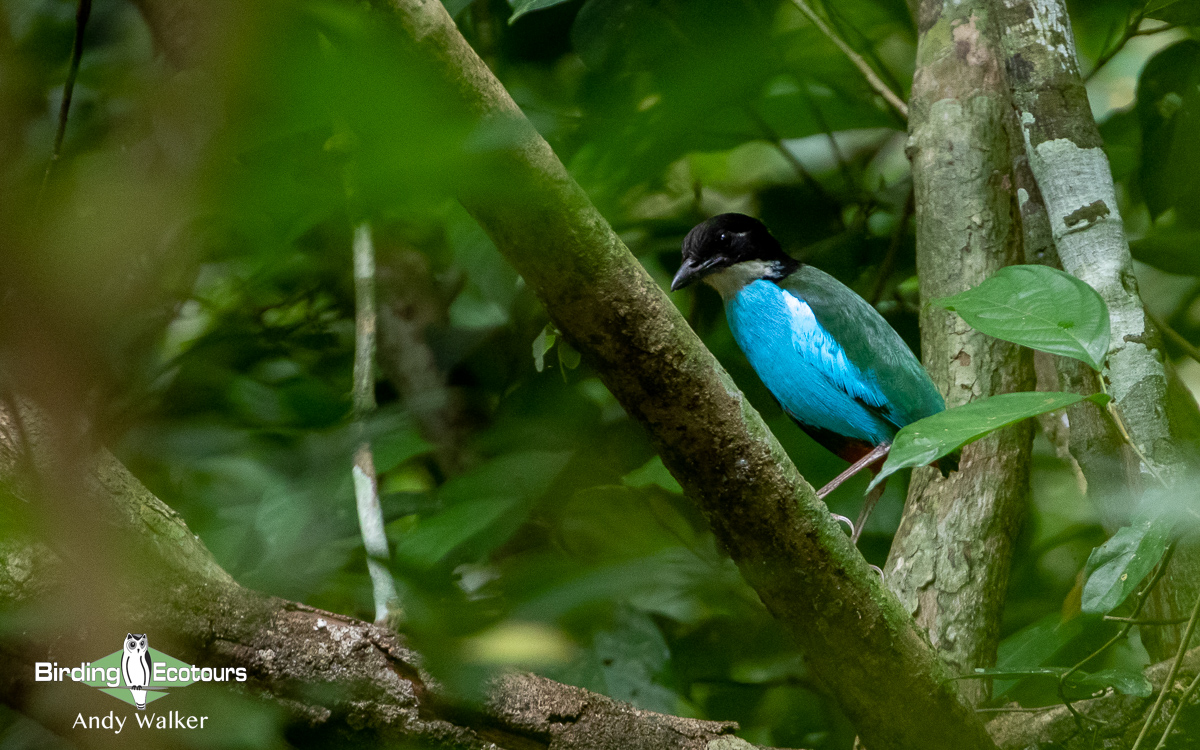
There are several well-known birdwatching sites in PICOP Forest, and we will likely check those out, as well as some different, off-the-beaten-track areas. ‘The Cemetery Area’ consists of disturbed forest and is great for viewing mixed species flocks, including Mindanao Blue Fantail, Rufous Paradise Flycatcher, Little Slaty Flycatcher, Black-headed Tailorbird, and Stripe-headed Rhabdornis. It may also give us our first opportunity for (Mindanao) Wattled Broadbill. Fruiting trees in the area may hold fruit doves and hornbills, with Writhed Hornbill, Mindanao (Tarictic) Hornbill, and Rufous Hornbill all possible, though with human pressures on the forest, these species are getting more difficult year-on-year. This area may also provide a good chance of the spectacular Azure-breasted Pitta and Striated Wren-Babbler.
Another well-known area of PICOP Forest is the ‘Quarry Area’, here, possibilities include Philippine Trogon, Philippine Falconet, Pink-bellied Imperial Pigeon, Philippine Green Pigeon, Black-chinned Fruit Dove, Guaiabero (a tiny parrot endemic to the Philippines, belonging to a unique genus), Blue-crowned Racket-tail, Pygmy Swiftlet, Buff-spotted Flameback, White-bellied Woodpecker, Winchell’s Kingfisher, Southern Silvery Kingfisher, Philippine Oriole, Philippine Magpie-Robin, and Metallic-winged Sunbird. Other species often found in mixed flocks include the likes of Rusty-crowned Babbler, Mindanao Pygmy Babbler, Short-crested Monarch, Black-headed Tailorbird, Philippine Leaf Warbler, Philippine Bulbul, and possibly (Mindanao) Wattled Broadbill.
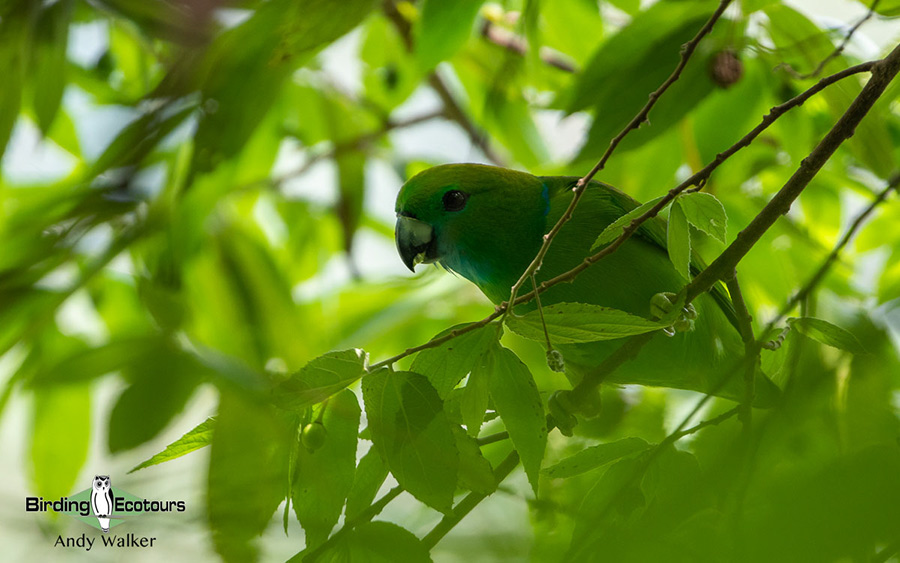
A great number of birds can be found by looking along the roads, and this may yield additional species, such as Black-and-white Triller, Philippine Leafbird, Black-bibbed Cicadabird, Short-crested Monarch, the much sought-after Celestial Monarch along with an exciting quartet of Hombron’s Kingfisher, (Mindanao) Wattled Broadbill, Azure-breasted Pitta, and Philippine Fairy-bluebird.
We will also try and fit in a visit to the disused Bislig Airfield. This site has a bird list of almost 200 species and so we will hope for a good selection of open-country species like Philippine Duck, Wandering Whistling Duck, Philippine Swamphen, Watercock, White-browed Crake, King Quail, Philippine Coucal, Ameline Swiftlet, Yellow Bittern, Cinnamon Bittern, Collared Kingfisher, Black-naped Oriole, Brown Shrike, Clamorous Reed Warbler, Chestnut Munia, Paddyfield Pipit, Philippine Nightjar, and maybe even Eastern Grass Owl or overwintering Eastern Yellow Wagtail or Middendorff’s Grasshopper Warbler.
Overnight (three nights): Bislig, Mindanao
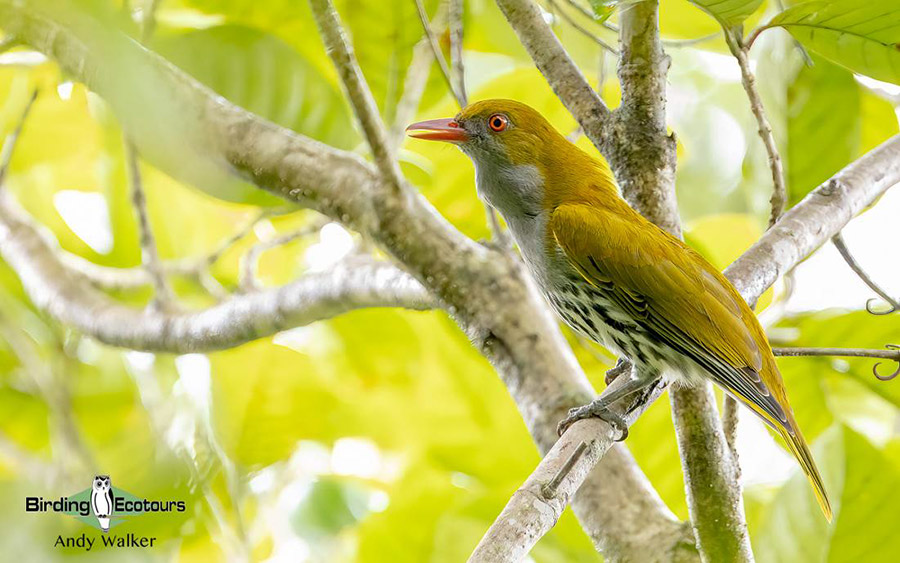
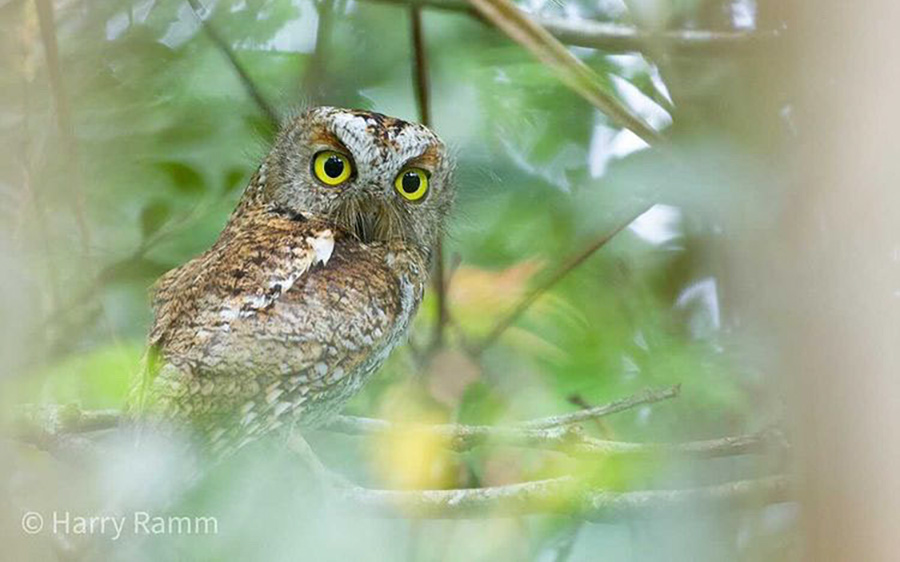
Day 15. PICOP to Compostela Valley
We will transfer from PICOP to Compostela Valley, where we hope to encounter the beautiful Lina’s Sunbird (see itinerary cover image). Birding from the road at the top of a gully can get quite exciting as many species pass through the habitat, including Black-and-cinnamon Fantail, Island Thrush, and Mindanao White-eye. At night, we will try for Mindanao Scops Owl, which is one of the most difficult owls to connect with in the country.
Overnight: Compostela Valley, Mindanao
Day 16. Compostela Valley birding and transfer to Davao (via Panabo)
An early start today will see us birding Compostela Valley for the morning. Our aim will be to connect with any species left over from the previous day’s birding, and may include Philippine Serpent Eagle, Philippine Cuckoo-Dove, Amethyst Brown Dove, Mindanao Brown Dove, Yellow-breasted Fruit Dove, Spotted Imperial Pigeon, Black-faced Coucal, Pinsker’s Hawk-Eagle, (Philippine) Yellow-vented Bulbul, Philippine Bulbul, Coleto, Little Pied Flycatcher, Red-eared Parrotfinch, Cinnamon Ibon, Grey Wagtail, and the skulking Long-tailed Bush Warbler.
Leaving the Compostela Valley, we will likely call in to a coastal site to look for the Critically Endangered Chinese Crested Tern, a very rare species globally, but one that has been recorded recently in this area. While looking for Chinese Crested Tern, other birds we may find here could include Pied Stilt, Grey Plover, Pacific Golden Plover, Far Eastern Curlew, Great Knot, Grey-tailed Tattler, Terek Sandpiper, Red-necked Stint, Black-headed Gull, Little Tern, Whiskered Tern, Greater Crested Tern, and Chinese Egret.
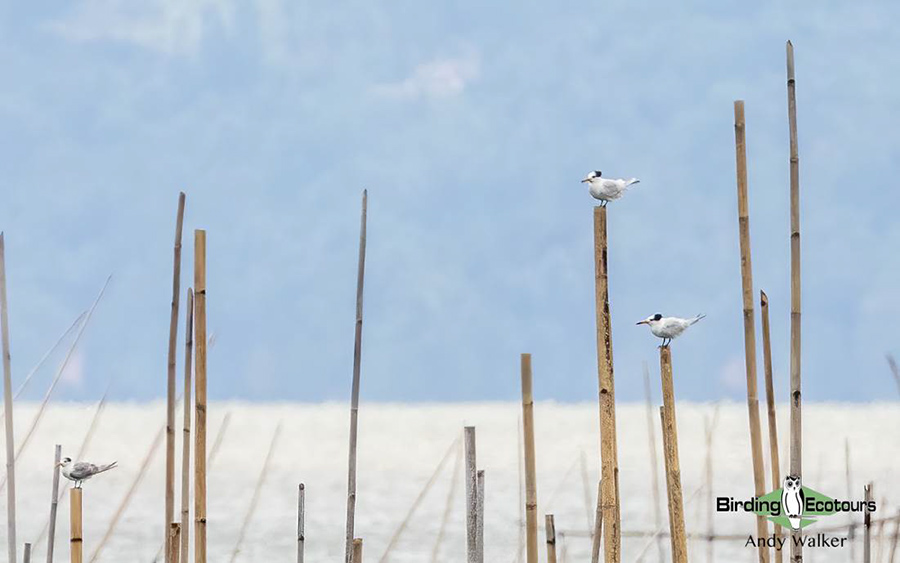
In the afternoon we will reach Eden Resort, which is part of the Apo-Talomo range. Located at around 3,000 feet (900 meters) on the densely forested slopes of Mount Talomo which reaches 8,800 feet (2,674 meters), the Eden Resort offers us a great opportunity to see a selection of Mindanao’s endemics, including some great montane and sub-montane species. Nearby Mount Apo is an active stratovolcano and is one of the highest peaks in the archipelago and much of the area falls within the Mount Apo Natural Park.
We may have some time for birding during the afternoon, when we can make a start on the birds listed below. At night we will try for Everett’s Scops Owl and Giant Scops Owl, both of which are recorded close by.
Overnight: Eden Resort, Davao
Day 17. Birding Eden Resort, fly from Davao (Mindanao) to Manila (Luzon) where tour concludes
We will have some time for early morning birding (and hopefully some afternoon birding the previous day) at the resort in search of Cryptic Flycatcher (a localized mid-altitude Mindanao endemic), Whiskered Flowerpecker, and some of the more common endemics like Red-keeled Flowerpecker and Mindanao (Tarictic) Hornbill. Careful study of the mixed-species feeding flocks should give us Brown Tit-Babbler and Orange-tufted Spiderhunter. Here we may also find Southern Silvery Kingfisher, Philippine Coucal, White-eared Brown Dove, Coleto, Philippine Bulbul, Philippine Pied Fantail, Elegant Tit, and Ridgetop Swiftlet. This area is known for overwintering Japanese Night Heron during some recent years, a tough bird to connect with globally, so we will be keeping a keen eye out, should any have been reported.
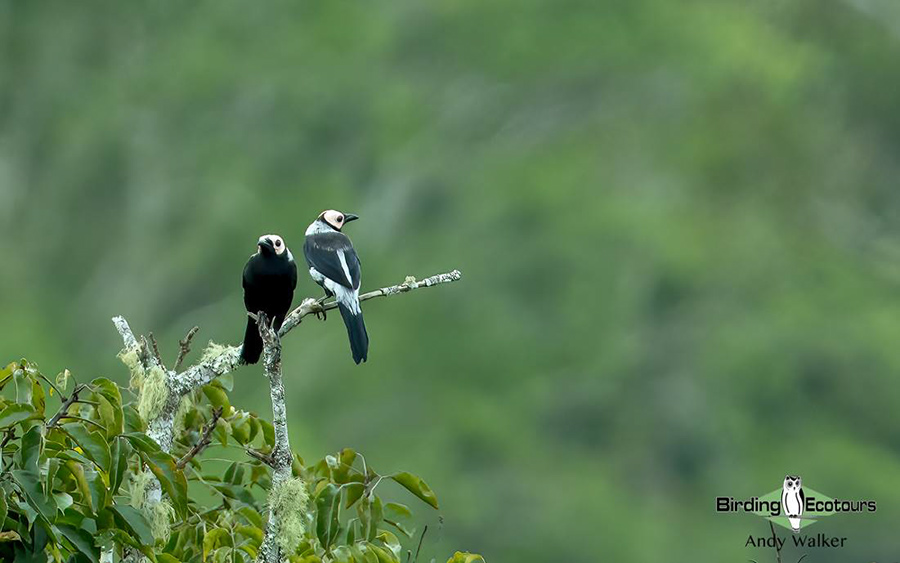
We will have to leave the resort in the middle of the morning to get to the airport in Davao for our flight back to Manila, where this exciting Philippine birding tour will conclude.
If you would like to talk to us about possible extensions to this tour, or private/custom birding tours to the Philippines please contact us.
Overnight: Not included
Please note that the itinerary cannot be guaranteed as it is only a rough guide and can be changed (usually slightly) due to factors such as availability of accommodation, updated information on the state of accommodation, roads, or birding sites, the discretion of the guides and other factors. In addition, we sometimes have to use a different guide from the one advertised due to tour scheduling or other factors.
Download Itinerary
Physical toughness:
The majority of the birding on this tour is of easy to moderate effort with more difficult hikes optional in some places. The birding on Mount Kitanglad requires moderate effort, especially if there has been rain when trails can be wet and slippery. Reasonable physical fitness and good agility are required here, though with the support of our excellent local porters we can help get you safely to the more difficult spots in most cases.
Accommodation note:
The majority of accommodation on the tour is of a good to medium standard with private facilities throughout. However, the accommodation for four nights on Mount Kitanglad (where we will be looking for the mighty Philippine Eagle), by necessity, is very basic. It is likely you will need to bring a travel towel for our time here.
